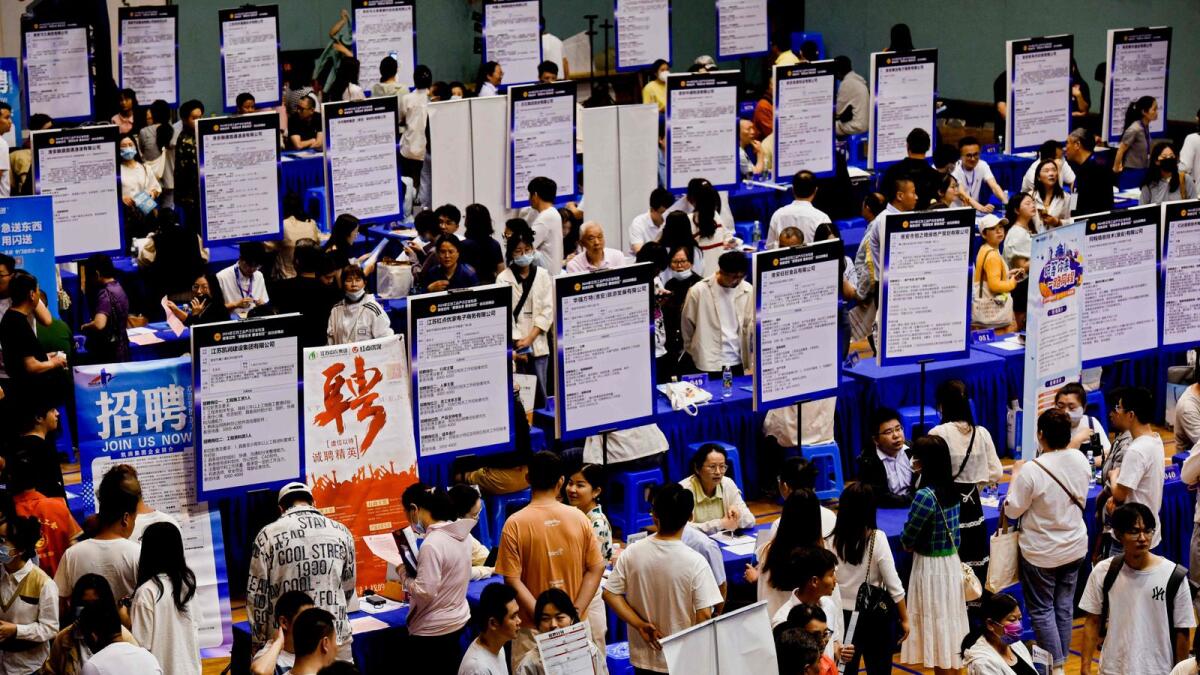Youth unemployment in China rose to 17.1 percent in July, marking the highest level this year. The country is currently facing challenges such as soaring joblessness among young people, a heavily indebted property sector, and intensifying trade issues with the West. Chinese Premier Li Qiang has called for struggling companies to have their difficulties addressed to combat the growing unemployment crisis. The unemployment rate among 16- to 24-year-olds saw a significant increase from June’s 13.2 percent, with nearly 12 million students graduating from Chinese universities this June, contributing to the tough job market.
President Xi Jinping highlighted countering youth unemployment as a top priority, as the unemployment rate among 25- to 29-year-olds increased to 6.5 percent in July. The overall workforce unemployment rate stood at 5.2 percent. However, these figures only take urban areas into account, providing an incomplete picture of China’s overall employment situation. The new unemployment data comes amid disappointing economic indicators such as weakened industrial production growth and declining real estate prices in major cities. Additionally, demand for bank loans has contracted for the first time in nearly 20 years.
China also faces international challenges, as the European Union and the United States are imposing trade barriers to protect their markets from low-cost Chinese products and unfair competition. These barriers are further adding to China’s economic woes. It is crucial for the Chinese government to implement effective policies to address youth unemployment and stimulate economic growth. As the second-largest economy in the world, China’s economic performance has implications for the global economy, making it essential to find solutions to the current challenges. By understanding the root causes of unemployment and implementing targeted strategies, China can work towards a more stable and prosperous future.









